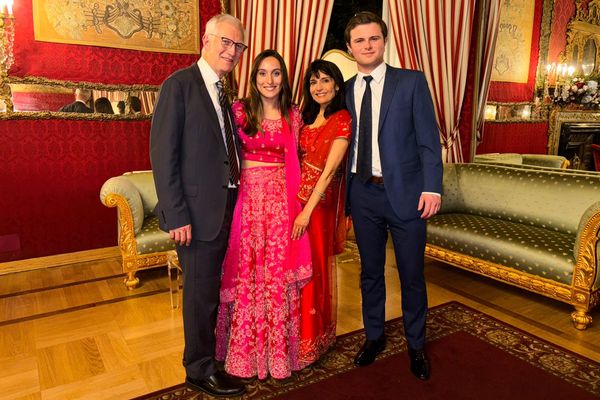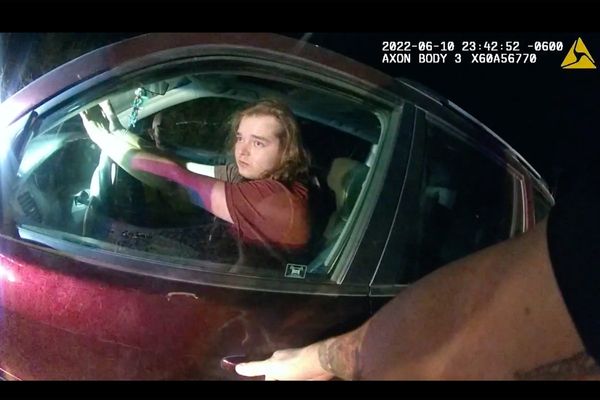
“I wouldn’t be too vocal supporting the comeback of a V10 engine if I liked what I saw from 2026,” said Carlos Sainz during the pre-Bahrain Grand Prix press conference.
As he did so, a palpable wrinkle of disdain passed across the bridge of his nose. Warming to his theme, he continued.
“But as I don’t really like what I see from 2026 in terms of what the car is going to do, the engine’s going to do, the way everything is going to work, I would say yes – I would like a V10 engine, with a few tweaks, to make it back sooner rather than later.
“At the same time, it's not fair to not give those regulations a bit of a chance, if everyone believes they’re so good. But everyone seems to believe they’re not so good anymore – that’s why everyone’s talking about it [V10s] again. So a bit of a strange one, no?”
It seems most peculiar to speak about a set of technical regulations which were pretty much agreed upon four years ago as if they were an abstract thought experiment. But here we are.
The power unit format is at the heart of the 2026 technical package and the fundamentals of that were settled while Jean Todt was still FIA president. At the time, Honda was heading for the exit, the list of putative new power unit suppliers was a short one, and there was no guarantee of the existing ones hanging on for much longer.

You might assume Ferrari would remain loyal – but would it want to be last man standing, like Maurice Gibb when his fellow Bee Gees stormed off the Clive Anderson Show? Unlikely.
So, with governments around the world leaning on car manufacturers to embrace electrification, it was agreed upon to increase the influence of the electrical systems on the balance of engine power. In another bid to consolidate the existing portfolio of car makers and potentially add new ones to it, the expensive and notoriously difficult-to-perfect ERS-H was consigned to the memory hole.
Perhaps rightly so – it never made it into mainstream car production.
The new format has succeeded in luring the likes of Audi and Cadillac but, as the deadline for implementation looms, F1’s stakeholders have belatedly grasped the full horror of the unintended consequences. The 2026 chassis regulations, finally ratified very late in the day, are an unholy mess of ugly compromises to minimise the power units’ limitations.
F1 and the FIA have tried to window-dress these foolishnesses as improvements to the spectacle. What the spectators will make of X-mode or Y-mode or whatever is yet to be determined; what we can say with utmost certainty is that the drivers don’t give a fig.
Dewy-eyed nostalgia often rides in on the coat tails of fear of the unknown, and so it is here. The 2026 regulations have had to service so many disparate voices and conflicting interests that the finished article was never likely to satisfy everyone. The increasingly noisy clamour from those wanting to rewind to 2004 suggests the 2026 package now has very few cheerleaders apart from the chaos-is-a-ladder merchants.
The idea of returning to a V10 engine format has gained traction with incredible speed. Reputedly it was first communicated by former F1 ‘ringmaster’ Bernie Ecclestone by phone at an F1 Commission meeting on the morning of the F175 season launch at London’s O2 Arena. You might recall that during the evening, the FIA logo was greeted by boos and jeers from the crowd.

Within days, FIA president Mohammed Ben Sulayem was musing about V10s out loud via Instagram in a rather transparent land grab to ‘own’ the notion before word got out. From there it went around like vomit in a lifeboat.
If the 2026 regulations enjoyed widespread support, the fantasy would doubtless have sputtered out ere long. Instead the noise has grown in pitch and volume because so much doubt exists over 2026 in private and in public.
Indeed, much of what was once private is now going public.
“I can definitely tell you what I think,” said Charles Leclerc when asked by Motorsport.com whether the majority of drivers share Sainz’s dislike of the 2026 package.
“I think V10 will be great. What I've been seeing for next year is not something that is particularly exciting for me.
“And I would say most of us are sharing the same opinion. Maybe some will be more vocal than others for different reasons – but yeah, I think we all agree that V10 will be a much better solution.”
Leclerc added that he wasn’t impressed with the safety of the new cars, either. One of the targets for the new package was that the cars should be lighter and therefore more agile – but, though short and narrower, they will only be 30kg lighter.

This is a small proportion of the bloat which has afflicted F1 cars in the past three decades and barely enough to make an appreciable difference to laptime, driver enjoyment, or spectacle. Leclerc’s misgivings suggest some poor compromises have had to be made just to accomplish this meagre saving.
Several team bosses and even a couple of drivers – notably Oscar Piastri – have lamented the business of going into one set of regulations while looking longingly at another, further down the line.
Regardless of the outcome of the bring-back-V10s discussions, the 2026 regulations will be implemented. Various team principals have uttered the cliché “the train has left the station” – but trains can be halted. A more apposite cliché would be “the die is cast”, first credited to Julius Caesar when he led his troops across the Rubicon.
The real topic of discussion is how soon can the unloved 2026 rules be abandoned in favour of the V10 nostalgia trip. That could be as soon as 2029 or as late as 2031.
And, as with the 2026 regulations themselves, anything could happen between then and now. Ben Sulayem could be dethroned in October, sapping momentum. Or 2026 might turn out to be a great season of racing.
Little wonder, then, that when a rather grumpy Lewis Hamilton was asked about the future nirvana of V10s he shook his head and replied, almost with a sigh:
“Couldn’t care less, mate, to be honest…”







